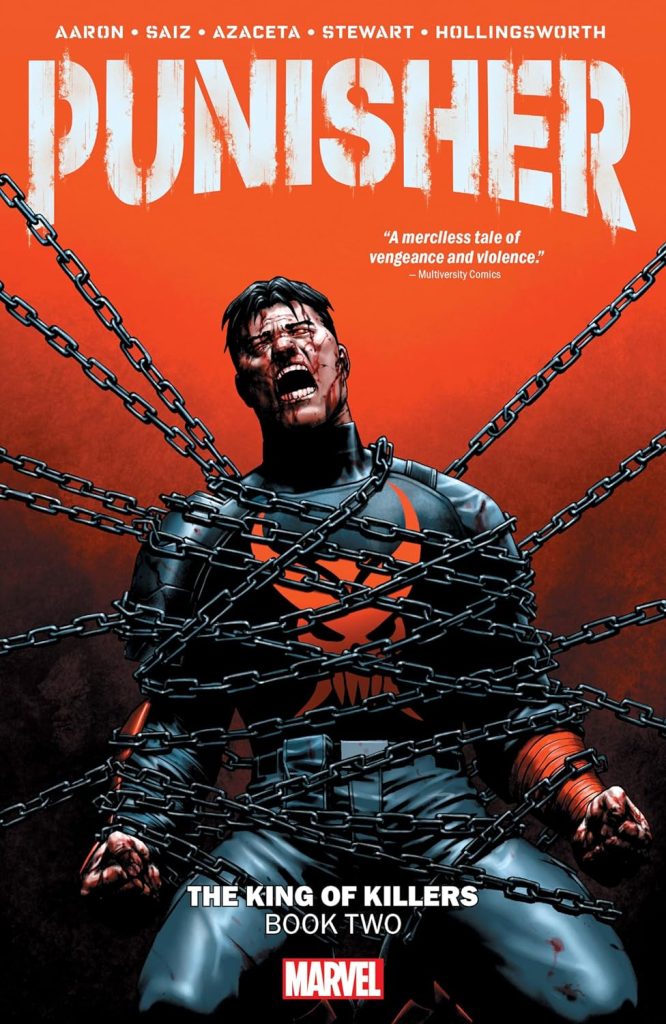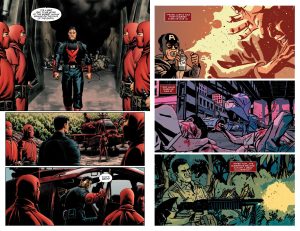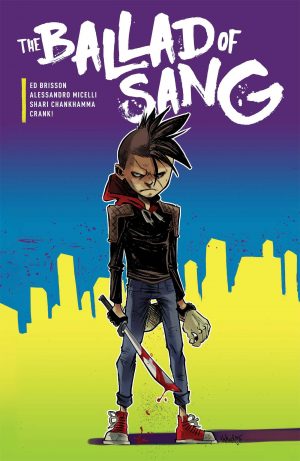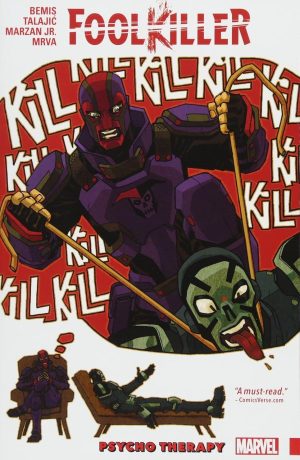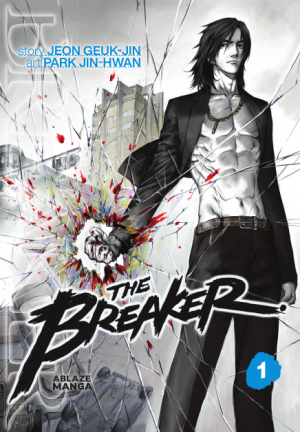Review by Karl Verhoven
Jason Aaron’s return to Frank Castle in The King of Killers is a story complete in a dozen chapters presented over two volumes. The first showed the Punisher’s seduction by occult ninja clan the Hand, who want a merciless killer as leader and are able to offer him the one thing he wants more than anything else: his wife back from the dead. Due to an arcane mystical process the Hand resurrect Maria Castle, but she’s a pallid, decaying presence, complete with holes from the bullets that killed her, but without any memory of the incident. It’s enough for Frank, and he now leads the Hand.
Daredevil turned up at the end of Book One, and his confrontation with the Punisher is contrasted with Maria’s therapy sessions in which Aaron delves into how things were when Castle returned to his family after his military service. As with childhood in the previous volume, it’s not an area often explored, and Aaron comes up with a viable state of mind. “The war wasn’t his fling”, he considers, “it was his one true love and now he’s mourning its loss”. It feeds into Aaron’s idea of the Punisher being corrupted as a child and the Hand being his destiny.
As before, Jesús Saiz revels in the violence too excessively. If Ares is squashing a head until it bursts or the Punisher decapitates someone, then Saiz will show it explicitly, which is unpleasantly pandering to the worst aspects of the character’s fanbase. The remainder of his art is glossy and dynamic, bringing out the action better than the quieter moments, but there aren’t too many of those. Paul Azaceta once again handles scenes set in the past, his less expressive shadowy style a complete contrast to the remainder, and effective as such.
Quite the twisted psychological drama plays out between the two strands, and while the action predominated in Book One, it’s the emotional foundations that take precedence here. There’s no shortchanging on the violent action, with the world’s worst targetted, Ares dealt with and a group of Avengers on hand, but the Punisher’s motivations are key. Yet Aaron’s interpretation means reconsidering much of what might have been presumed about the Punisher’s past. It’s not a revision, just filling in between the panels, and as such it’s viable. However, the present day sequences have massive plot holes, one being that the Hand’s high priestess would spend decades cultivating Castle, then discard him after a single transgression. Further, for all the good work put in, the ending of Maria’s story isn’t predictable, but neither is it credible, and worse, someone along the line isn’t going to be able to resist tinkering.
The ending may not satisfy either, but it certainly sets a problem for whoever’s next to write the Punisher, and that’s funny. Overall, Aaron feeds a wealth of new ideas into The King of Killers, and not all of them work, but as a short diversion it’s slightly better than it seemed to be in Book One.
